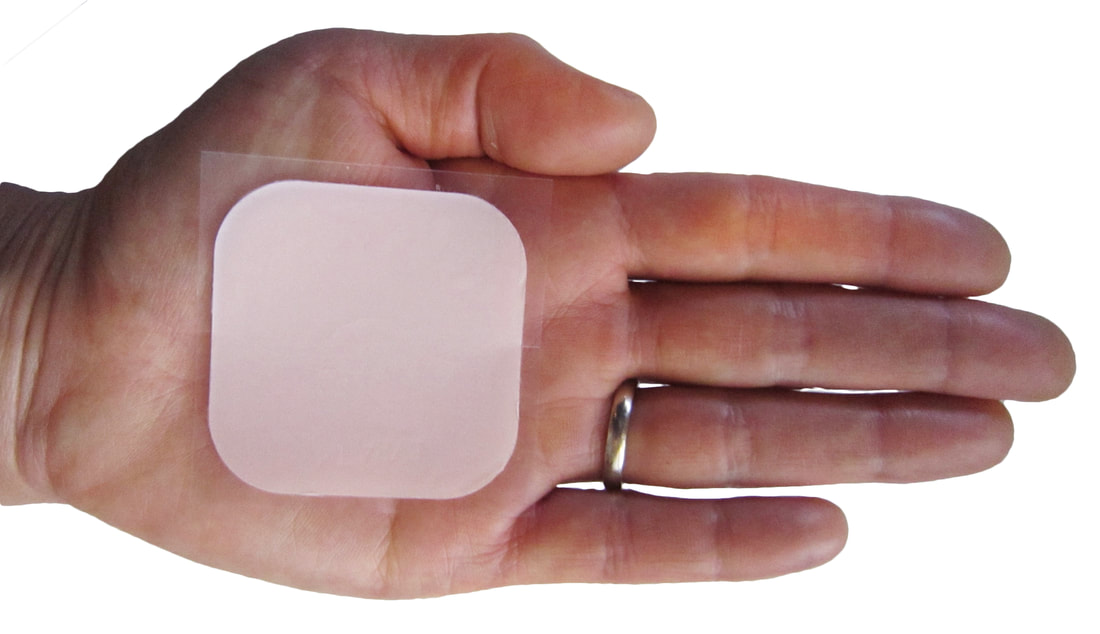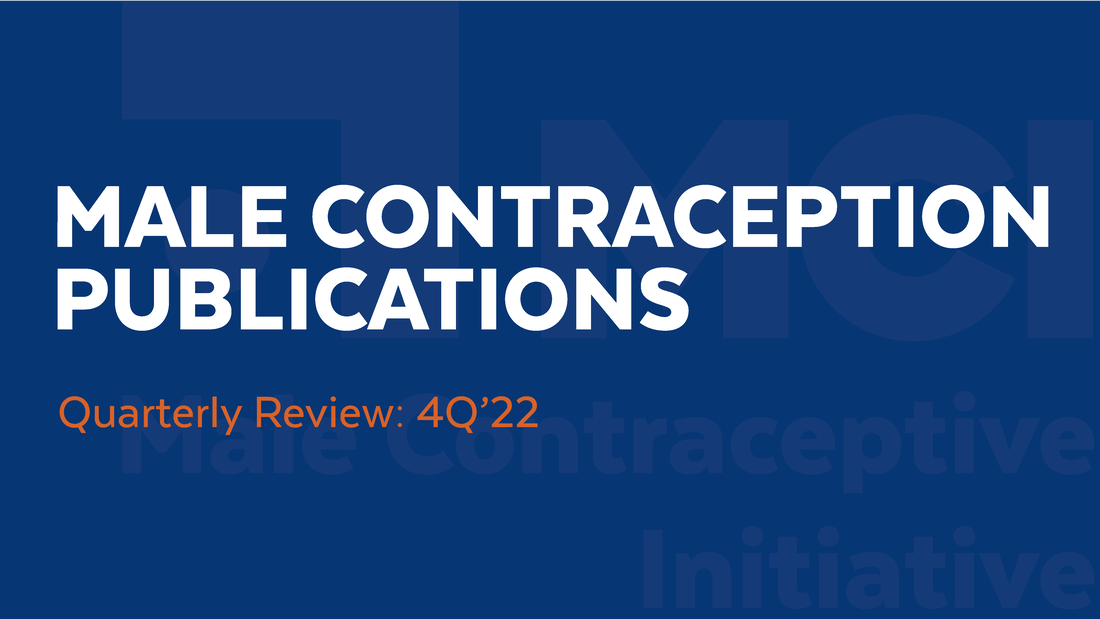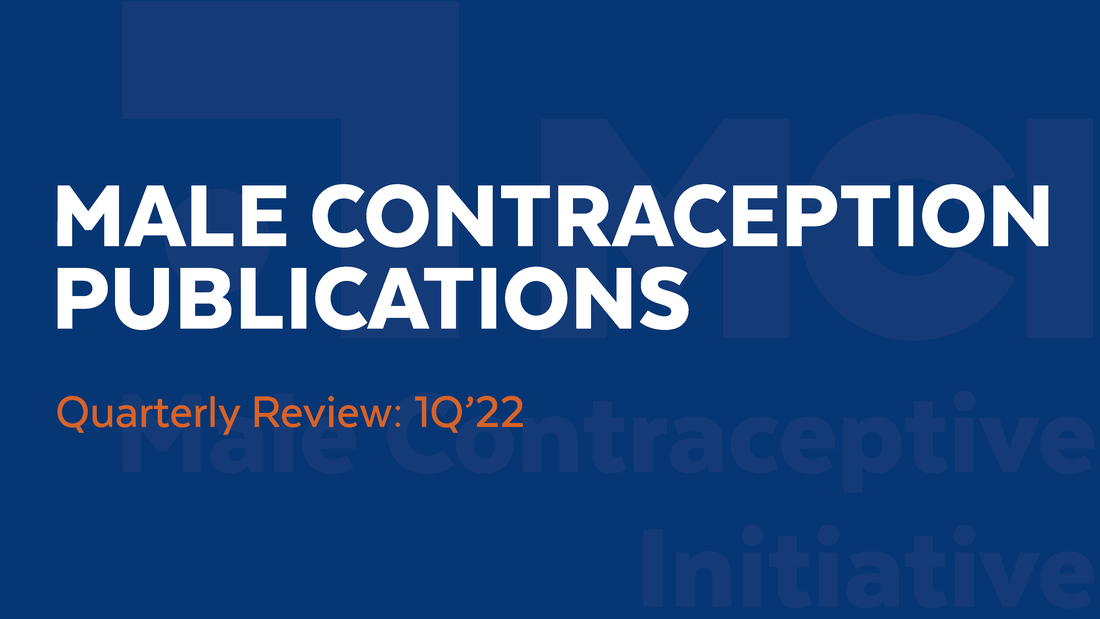Celebrating Women's History Month: Advancing Reproductive Autonomy Through Male Contraception3/7/2024 March is Women's History Month, a time to honor the achievements and contributions of women throughout history and in contemporary society. As we at MCI look to celebrate the progress made in advancing gender equality and women's rights, we also recognize the role that male contraception can play in promoting reproductive autonomy for all individuals, regardless of gender. At MCI, we believe that empowering individuals with diverse contraceptive options is crucial for achieving true reproductive freedom.
0 Comments
MCI's Youth Advisory Board (YAB) offers an undergraduate research opportunity in an effort to engage young scholars in the field of male contraception. The YAB Project Grant is for undergraduate students all over the world seeking to advocate for male contraception. MCI's support allows students to receive mentorship and further their research experience through creating projects related to new male contraception. The opportunity was made available with support from the Parsemus Foundation and contributions from Male Contraceptive Initiative.
When it comes to contraception, the conversation often has women take full responsibility. However, the landscape is changing, and male contraception is emerging as a crucial aspect of reproductive health that can have a significant impact on relationships. The availability of male contraceptive options not only provides men with greater reproductive autonomy, but also has the potential to foster healthier and more equitable relationships.
As we embark on the journey to revolutionize family planning and contribute to the development of non-hormonal, reversible male birth control, it's essential to navigate the intricate landscape of clinical trials. Clinical trials play a pivotal role in vetting and approving new drugs, ensuring their safety and efficacy. However, the path to bringing innovative contraceptive solutions to market is riddled with challenges. In this blog post, we delve into the multifaceted challenges associated with clinical trials for non-hormonal, reversible male birth control and explore the strategies and considerations necessary to overcome these hurdles.
In the pursuit of reproductive autonomy, it is imperative to foster an inclusive approach to contraception that transcends gender norms. As we champion a future where individuals of all genders share the responsibility for family planning, the development of new forms of non-hormonal, reversible male birth control emerges as a crucial step towards achieving this vision. In this blog post, we explore why everyone should rally behind and actively support the research, development, and accessibility of male contraceptives that offer safety, efficacy, and a pathway to shared responsibility in reproductive choices.
Empowering Reproductive Autonomy: The Imperative for Non-Hormonal, Reversible Male Birth Control12/8/2023 In the pursuit of reproductive autonomy for all individuals, it is essential to recognize and address the asymmetry in contraceptive options. Historically, the burden of preventing unintended pregnancies has disproportionately fallen on women. To achieve true reproductive autonomy, we must advocate for and invest in the development of new forms of non-hormonal, reversible male birth control. This blog post delves into the reasons why male methods of contraception are critical for fostering equality, shared responsibility, and empowering individuals of all genders in their reproductive choices.
World Vasectomy Day: Celebrating Choice and Advocating for Reversible Male Contraceptives11/17/2023 World Vasectomy Day is an occasion to celebrate not only the significance of vasectomy as a reliable and effective male contraceptive method but also to emphasize the importance of expanding the range of reversible male contraceptive options. In this blog post, we will delve into the world of vasectomy, its benefits, and the pressing need for more reversible male contraceptive alternatives. Join us as we celebrate World Vasectomy Day and advocate for greater choices in family planning.
A diaphragm is a barrier contraceptive device that covers the cervix to block sperm from entering. It is a cup made of soft latex, plastic, or silicone with a firm, flexible rim placed deep in the vagina before sex to prevent sperm from being able to reach an egg.
(Image courtesy of James Heilman, MD - Own work, CC BY-SA 3.0, https://commons.wikimedia.org/w/index.php?curid=22535295) The contraceptive patch is a small, flexible, adhesive patch worn on the body for 3 weeks, and is removed for the fourth week to allow for menstruation. The patch continually releases the hormones estrogen and progestin, which prevent ovulation and thicken the cervical mucus to prevent pregnancy.
The quest for effective and reliable male birth control methods has gained significant attention in recent years thanks to the efforts of organizations like MCI. While advancements in contraceptive options for women have also been substantial, the limited choices available to men underscore the need for innovative solutions in order to provide safe, effective contraception for all genders. Developing this next generation of birth control methods requires developing a deep understanding of people's needs and preferences, which is where market research plays a vital role: offering valuable insights that shape the design and development process. In this blog post, we will explore why understanding people's needs is crucial and make a compelling case for conducting market research in the realm of male contraception.
Reproductive autonomy is a fundamental human right that enables individuals to make informed decisions about their reproductive health and exercise control over their own bodies. Historically, the responsibility of contraception has been placed primarily on women, which limits their reproductive autonomy. However, male birth control has the potential to revolutionize reproductive health and empower all people to take control of their own reproductive choices.
With all the attention and excitement building about ChatGPT and the future of Artificial Intelligence-assisted, well, everything, we decided to put the platform to work and asked it to write a blog post for us about male birth control. Less than a minute after asking, here’s what it came up with:
(Image Source: Y. Rosen, MD) The production of sperm can be disrupted with a rise in temperature. Male thermal contraceptive methods (MTCs) involve heating the testicles inside the scrotum so that sperm production is slowed down. MTCs induce temporary infertility in men via a number of different methods, including applying hot water to the scrotum, generating heat on the testicles using ultrasound or heating pads, and creating artificial cryptorchidism (i.e., holding the testicles inside the abdomen) using specialized underwear.
This blog series highlights pertinent publications that were featured in MCI's monthly newsletter editions in the fourth quarter of 2022. The purpose of this blog is to report interesting or relevant work from MCI Fellows, Grantees, staff members, and other community authors in the field of male contraception.
The end of the year always invites the opportunity to look back and reflect upon all that transpired over the previous months that help define the year, whether good, bad, or otherwise. It is an opportunity to introspect and evaluate how yesterday’s actions led to today and help inform tomorrow.
A critical component of advancing the cause of “Reproductive Autonomy for All” is education. The shortcomings of sexual education are not limited, and are seemingly universally felt with disastrous results. As such, it is incumbent upon all of us to take the steps necessary to fully understand our reproductive biology in order to better inform our family planning objectives and to make the best decisions possible for our individual needs and desires.
Thankfully, there are a plethora of great resources available to help meet our educational interests and needs, including a whole host of books that both inform and inspire us here at MCI. In this post, we share a collection of our favorite books, but please also be sure to subscribe to our monthly newsletter as we highlight these and other titles periodically. We believe that all people should have reproductive autonomy, and the access to contraception that works best for their bodies and their lifestyles. Unfortunately, not all people have this. We’re here to talk about a group of people who may not have access to contraceptive products that are safe and reliable in pregnancy prevention. Overweight and obese individuals that are sexually active deserve to have birth control that they can rely on and have access to.
Understanding people’s perspectives around male contraception helps guide our work at MCI. Sharing them is a privilege as well as a mandate: it’s of strategic importance to us to facilitate and broadcast the interest for male methods in an effort to present the undeniable market demand for them. Normally this is done through the lens of our grantees, fellows, research community, or even the general public. But lately, we’ve been endeavoring to share the views of MCI’s staff as well. In that spirit, this is a conversation with our Program & Communications Coordinator Sabey Boswell in which she shares her thoughts about male contraception as well as her interest in working with MCI.
September is Sexual Health Awareness Month. If your sexual health isn’t something you’ve thought about in a while, then now is a perfect time. We know that it can be hard to talk about these things, as there are a lot of stigmas surrounding sexuality. We’re here to shed some light on sexual health and encourage open conversation. If you want to have a healthier and more fulfilling sex life, this article is for you!
MPTs or Multipurpose Prevention Technologies are products created to prevent unintended pregnancy and protect against HIV and other sexually transmitted infections. In order for a product to be labeled as an MPT, it must protect the user from at least two of the following reproductive health risks: HIV, STI transmission, and unintended pregnancy.
How does the law relate to reproductive health, especially male contraception? This is a question I found myself answering in many instances whenever I presented my topic to the lecturer for approval. For once, I thought this would be a unique experience; doing something that has been missing in my field of study and the feeling of being the first to explore the idea was overwhelming. Little did I know that I was getting myself into something that would shape my general perception and career projection.
Male Contraceptive Initiative’s Statement on the U.S. Supreme Court Decision to Overturn Roe v. Wade6/30/2022 Male Contraceptive Initiative’s vision is “Reproductive Autonomy for All.”
We fund and advocate for the development of new non-hormonal, reversible contraceptives for men and sperm-producing individuals. We envision a world in which every child birth is intentional, and occurs only after careful consideration and in line with the family planning desires of those involved. Our work closes the gap in contraception that prevents men from taking an active role in avoiding a pregnancy, but most importantly, alleviates a disproportionate and undue burden for women. Shyann Stewart from North Carolina Central University shares reflections on what she learned during her internship with MCI in this blog post. Unplanned pregnancies account for 45 percent of all pregnancies in the United States. In many of those cases, women were either taking ineffective birth control or not utilizing any birth control at all. Annually, approximately 700 women die in the United States as a result of pregnancy and childbirth complications, making it one of the highest rates in developed nations. Maternal mortality, like infant mortality and life expectancy, is seen as a key measure of a country's health and a bellwether indicator for assessing both human rights and public health.The purpose of this project is to create health promotion materials based on African American women’s perceived risk of maternal mortality, their contraceptive preferences and willingness to use male contraceptive methods.
Most people think that a person is either biologically female or biologically male despite their gender identity. This notion is outdated and incorrect. While there is a high prevalence of a biological binary, biological sex is not, in fact, binary. The intersex community is diverse and full of different sex characteristics (e.g., sex chromosomes, gonads, genitalia, hormones, or a combination). These characteristics don't fit into our social binary but exist naturally in biology.
This blog series highlights pertinent publications that were featured in MCI's monthly newsletter editions in the first quarter of 2022. The purpose of this blog is to report interesting or relevant work from MCI Fellows, Grantees, staff members, and other community authors in the field of male contraception.
|
Categories
All
Archives
June 2024
|
|
|
Donate to Male Contraceptive InitiativeYour generous donation makes a difference!
|
© Male Contraceptive Initiative. All rights reserved.


























 RSS Feed
RSS Feed
